Music is a universal language that transcends borders and connects people worldwide. Playing an instrument allows you to express yourself, connect with others, and experience the joy of creating music. While some instruments are relatively easy to pick up, others require years of dedication and practice to master. This article will explore the music world and discover the ten most challenging instruments to learn.
What are the 10 Hardest Instruments to Learn?
Let’s start by answering the question: What are the ten hardest learning instruments? These are musical instruments that demand exceptional skill, coordination, and patience. They are known for their complex techniques and bold learning attitudes. Here is our list of the top ten most challenging instruments:
1. The Violin

- The violin is renowned for its difficulty due to its precise finger placement and the need for perfect bow control.
2. The French Horn
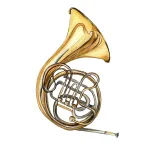
- Mastering the French horn requires strong embouchure and a keen sense of pitch.
3. The Oboe

- Oboists must contend with a delicate double reed and intricate fingerings.
4. The Harp
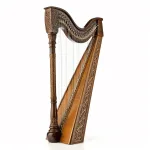
- Playing the harp demands multitasking, as both hands independently produce music.
5. The Bagpipes
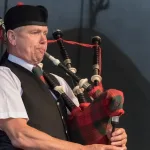
- Bagpipers must manage the complex mechanics of the instrument while maintaining proper air pressure.
6. The Double Bass

- This instrument’s size and weight pose physical challenges, and the fretless fingerboard requires precise intonation.
7. The Accordion
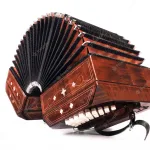
- Accordionists navigate many buttons and keys, making it a challenging instrument to master.
8. The Theremin
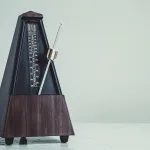
- Known for its unique electronic sound, the theremin requires precise hand movements in the air to control pitch and volume.
9. The Bassoon

- Bassoonists must conquer a complex fingering system and master breath control.
10. The Tabla
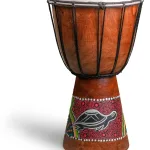
- This Indian percussion instrument demands rhythmic precision and a deep understanding of intricate rhythms.
Now that we’ve introduced the ten hardest instruments to learn let’s delve into each in greater detail.
The Violin
The violin, often associated with classical music, is a beautifully melodic but notoriously challenging instrument to master. Its difficulty lies in the precision required for finger placement on the fingerboard and the need for perfect bow control. When you pick up a violin, you’ll quickly realize that every nuance of your finger movements and bow strokes affects the sound produced. The slightest deviation in finger placement can lead to a squeaky or off-pitch note.
To achieve mastery, violinists spend countless hours practicing scales, arpeggios, and intricate classical compositions. It’s a journey of refining muscle memory and developing an acute sense of pitch. The violin can be unforgiving, but the reward of producing hauntingly beautiful music is well worth the effort.
The French Horn
The French horn is renowned for its rich, warm tones but demands exceptional skill from its players. To produce the instrument’s characteristic sound, horn players must develop a strong embouchure involving the muscles around the mouth and lips. Think of it as a form of lip gymnastics; the embouchure controls the airflow and, consequently, the pitch and tone of the horn.
Furthermore, its lack of valves sets the French horn apart from many other brass instruments. While instruments like the trumpet or trombone have valves to change notes, the French horn relies on the player manipulating the hand inside the bell. This adds another layer of complexity, requiring precise hand placement for each note.
The Oboe
The oboe is a woodwind instrument known for its bright, penetrating sound. Its unique challenge lies in its double reed, made of two very thin cane pieces. Achieving proper tone and intonation on the oboe requires precise control over these delicate reeds. Unlike other woodwinds with a single reed, the oboe’s double reed demands a nuanced touch and keen attention to detail.
Oboists must also master complex fingerings to produce a wide range of notes. Combining breath control, finger dexterity, and reed management makes the oboe a formidable challenge, especially for beginners.
The Harp
The harp is often associated with its angelic, ethereal sounds, but don’t be fooled by its elegant appearance; it’s a complex instrument to master. Harpists use both hands independently to pluck the strings, but that’s not all – they also manage a set of pedals at their feet. These pedals alter the pitch of the strings, turning the harp into a fully chromatic instrument.
Playing the harp is akin to a delicate dance. Harpists must coordinate hand and foot movements seamlessly to create the desired melody. The combination of precise hand-eye-foot coordination and the ability to read complex sheet music makes the harp a challenging yet captivating instrument.
The Bagpipes
Bagpipers may make playing the instrument look effortless, but it’s far from easy. The complexity of the bagpipes lies in managing the bag’s air pressure while simultaneously coordinating fingering and controlling the drone pipes. Achieving the perfect blend of sound is a true art, and it requires a deep understanding of the instrument’s mechanics.
Maintaining consistent pressure in the bag to sustain the drone notes while fingerpicking the melody is no small feat. Bagpipers also need to have a good ear for pitch, as the instrument can be particularly unforgiving regarding intonation. It’s a unique musical challenge that dedicated players have mastered for centuries.
The Double Bass
The double bass is the largest and heaviest member of the string family, presenting a significant physical challenge to players. Its sheer size demands considerable strength and endurance from musicians. When playing the double bass, you’re producing deep, resonant notes and performing a physical workout.
The double bass features a fretless fingerboard, meaning players must develop precise intonation skills. Finding the right notes and maintaining perfect pitch without frets is a demanding aspect of mastering this instrument. Playing the double bass requires physical strength and mental fortitude to navigate its unique challenges.
The Accordion
Accordion players navigate a labyrinth of buttons and keys while simultaneously controlling the instrument’s bellows. The accordion’s complexity can be daunting for many aspiring musicians, especially those new to the instrument. It’s like mastering a musical puzzle.
To become proficient, accordionists must develop a keen sense of coordination between their hands and feet. The buttons and keys on the accordion offer a vast range of notes and chords, and players must learn to navigate this maze with precision. Achieving a smooth and harmonious sound on the accordion requires dedication and practice.
The Theremin
The theremin is a unique electronic instrument that produces sound through hand movements in the air. Players manipulate electromagnetic fields around the instrument to control pitch and volume. Achieving mastery of the theremin is akin to mastering an ethereal dance of the hands, where the slightest motion can change pitch.
Playing the theremin requires precise hand techniques and a deep understanding of how to shape sound through gestures. It’s a unique instrument that challenges conventional notions of music and control.
The Bassoon
The bassoon, another double-reed instrument, offers a deep and resonant sound that enriches many classical and orchestral compositions. However, its complexity can be intimidating. Players must navigate a complex fingering system while maintaining control over the instrument’s reed and mastering breath control.
The unique tone and timbre of the bassoon make it a valuable addition to many musical ensembles. Still, it’s challenging nature means that players must invest time and effort into honing their skills. Developing the technical precision required to excel on the bassoon is rewarding for those who are up for the challenge.
The Tabla
The tabla, a traditional Indian percussion instrument, is known for its intricate rhythms and rich cultural significance. Mastering the tabla demands rhythmic precision and a deep understanding of complex patterns. It’s an instrument that connects music with tradition, making it a unique and culturally rich challenge.
Tabla players must develop exceptional hand-eye coordination to execute complex rhythms. Each stroke on the tabla drum has a specific syllable and rhythm associated with it, and mastering these patterns requires years of dedicated practice. The tabla offers a window into Indian classical music, and those who learn it are rewarded with a profound musical experience.
As we wrap up, in music, challenges and rewards often go hand in hand. The ten instruments discussed in this article are undoubtedly among the most challenging to learn, but they also offer unique opportunities for musical expression and personal growth. Whether you’re drawn to the elegance of the violin, the French horn’s rich tones, or the tabla’s rhythmic complexity, each instrument has its beauty and allure.
Remember that the journey of learning a musical instrument is as important as the destination. It’s a path filled with dedication, practice, and the joy of making music. So, if you’re ready to take on the challenge and embark on a musical adventure, choose one of these ten instruments and start your journey today. Who knows, you may become the next virtuoso in the music world!


